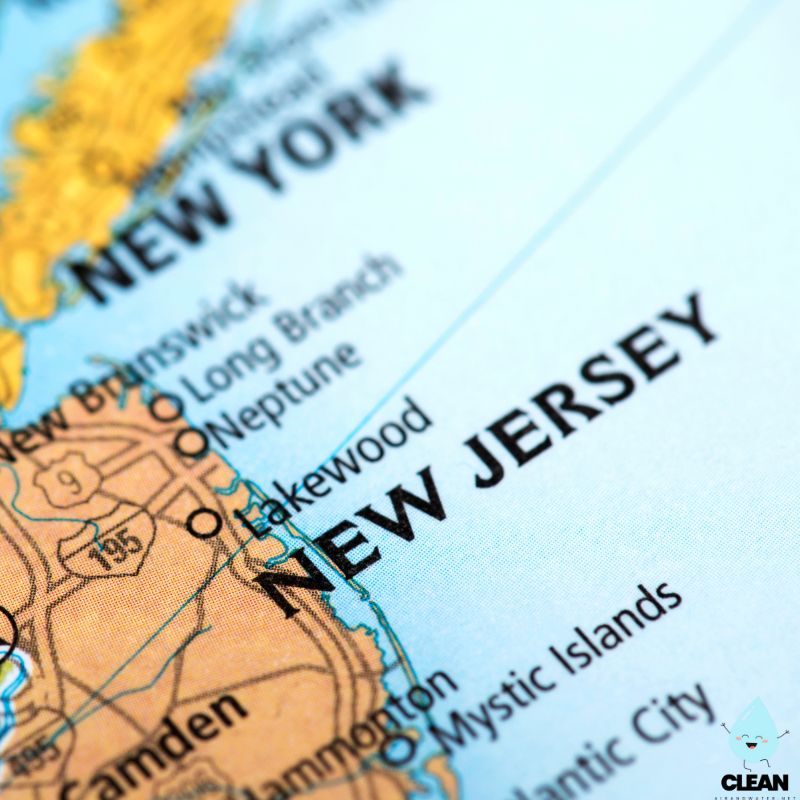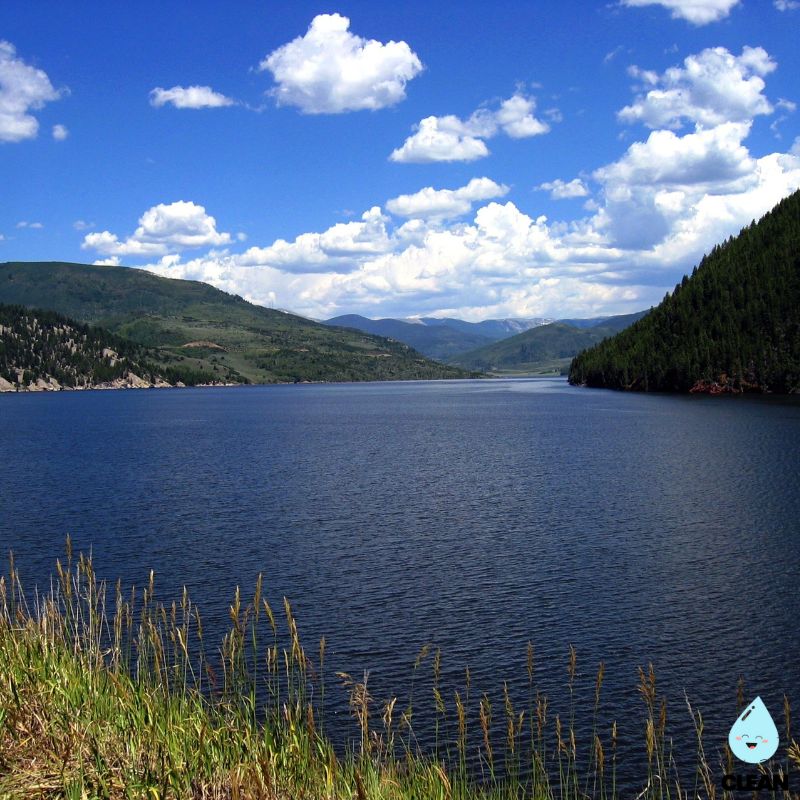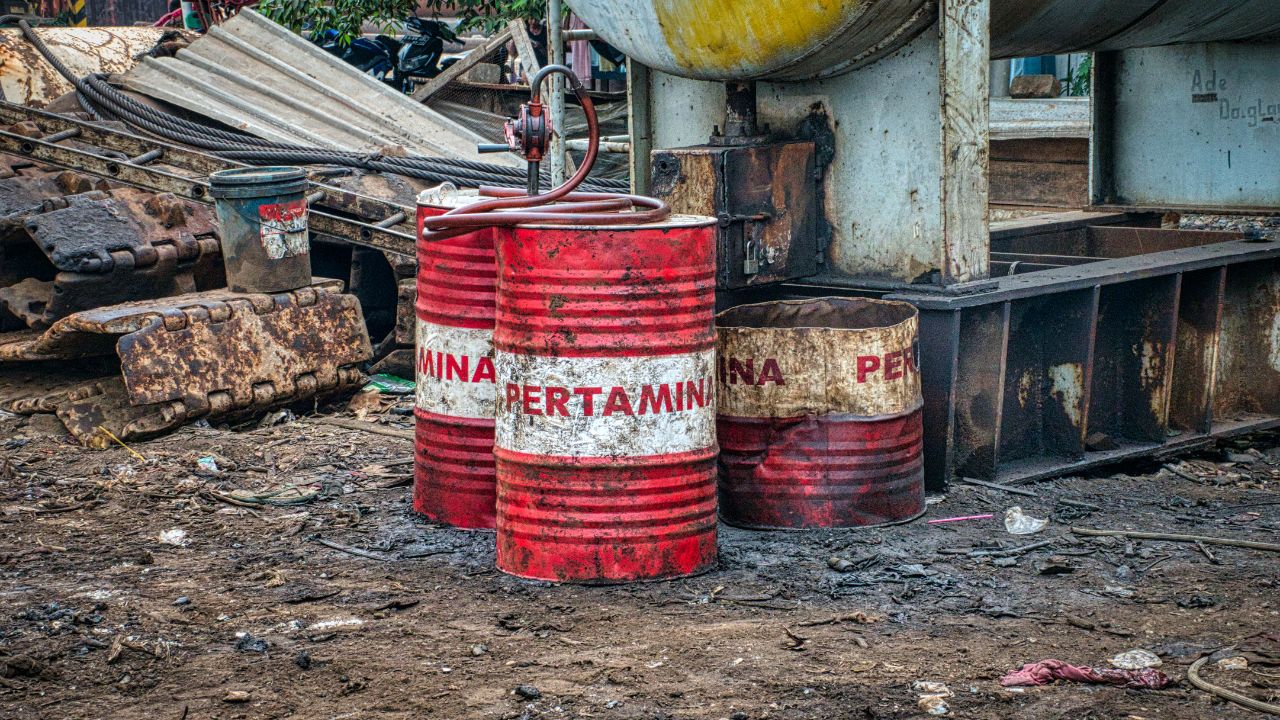New Jersey Water Quality at a Glance
second-worst in US
Is New Jersey Water Safe to Drink?
Second-Worst Water Quality in US – New Jersey ranks #2 nationally for water contamination with PFAS detected in 63% of water systems serving 84% of the population. Major concerns include PFOA/PFOS at 6-5 ppt respectively, arsenic contamination affecting 62.4% of untreated wells, lead in aging infrastructure, and widespread industrial pollution. Communities of color face disproportionate exposure with 92-95% served by PFAS-contaminated systems.
⚠️ Key Concerns for New Jersey Residents
- PFAS “Forever Chemicals”: 7.8M residents exposed; first state to regulate PFAS but contamination widespread; 70+ water systems exceed health limits
- Environmental Justice Crisis: 92% of Hispanic, 94% of Black, and 95% of Asian populations served by PFAS-contaminated water systems
- Arsenic Contamination: 62.4% of untreated wells exceed safe levels; home filtration systems malfunctioning in 71% of tested homes
- Industrial Legacy: Highest density of hazardous waste sites per square mile in US; ongoing contamination from manufacturing and military activities
Read the full report below for detailed analysis, city-specific data, and actionable recommendations for New Jersey residents.
New Jersey – The Garden State – Water Quality Report 2025: PFAS Testing, Infrastructure Concerns & Safety across your state
New Jersey’s water infrastructure serves approximately 9.2 million residents across the nation’s most densely populated state, from the Hudson River corridor in the north to the Delaware Bay in the south. The state operates through a complex network of over 600 public water systems, ranging from large utilities like New Jersey American Water, which serves 2.7 million customers, to smaller municipal systems like Newark’s Water and Sewer Utilities serving over 400,000 residents. New Jersey’s water sources include the Delaware River, Raritan River system, and numerous reservoirs and groundwater aquifers that supply both urban centers and industrial facilities throughout the region.
Despite its reputation as the Garden State, New Jersey faces significant PFAS contamination challenges that rank among the most severe in the nation. According to the American Society of Civil Engineers’ 2025 Infrastructure Report Card, New Jersey’s drinking water infrastructure requires $8.6 billion in improvements over the next two decades. The state has received over $168 million in federal infrastructure investments from the Biden-Harris Administration’s Bipartisan Infrastructure Law to address these challenges, focusing on PFAS treatment, lead service line replacement, and emerging contaminant removal. New Jersey’s pioneering approach to PFAS regulation, being the first state to establish Maximum Contaminant Levels for these “forever chemicals,” demonstrates the state’s commitment to protecting public health through partnerships between the New Jersey Department of Environmental Protection (NJDEP), local utilities, and federal agencies.

New Jersey Water Quality: Current Status (2024-2025)
Statewide Compliance and Testing
- Overall Compliance: Most of New Jersey’s 600+ public water systems meet federal Safe Drinking Water Act standards, though the state faces the nation’s third-highest PFAS contamination levels, with PFAS detected in 63% of water systems serving 84% of the state’s population.
- PFAS Leadership: New Jersey became the first state to establish Maximum Contaminant Levels for PFAS chemicals, with comprehensive monitoring revealing some of the highest “forever chemical” concentrations nationally, particularly near industrial sites and military installations.
- Infrastructure Investment: Over $168 million in federal funding through the Bipartisan Infrastructure Law has been allocated to New Jersey for water infrastructure improvements, including dedicated funding specifically for PFAS treatment and lead service line replacement programs.
Major Water Sources and Challenges
- Delaware River System: Primary source for southern New Jersey communities, facing ongoing monitoring for industrial legacy contamination and requiring advanced treatment for emerging contaminants including PFAS.
- Raritan River Basin: Serves central New Jersey including key industrial areas, with documented PFAS contamination at facilities like the Raritan-Millstone Water Treatment Plant requiring ongoing pilot treatment programs.
- Regional Infrastructure Disparities: While major utilities like New Jersey American Water invest over $520 million annually in upgrades, smaller municipal systems face significant challenges meeting new federal PFAS regulations by 2031.
Emerging Contaminant Response
- PFAS Regulation Implementation: New EPA drinking water standards for PFOA and PFOS (4 parts per trillion) take effect in 2031, with New Jersey already having stricter state standards and comprehensive testing programs in place since 2019.
- Treatment Technology Deployment: Water utilities are implementing advanced treatment technologies including granular activated carbon and reverse osmosis systems, with facilities like Salem’s new PFAS removal system serving as models for statewide deployment.
- Historic Legal Settlement: New Jersey secured a landmark $450 million settlement with 3M in 2025 for statewide PFAS contamination, representing the largest such settlement in state history and providing funding for cleanup and prevention efforts.
Environmental Justice and Community Response
- Disproportionate Impact: Research shows communities of color and low-income areas in New Jersey face higher PFAS contamination levels, with 92% of Hispanic, 94% of Black, and 95% of Asian populations served by water systems where PFAS were detected.
- Federal Support: Dedicated funding streams through the Emerging Contaminant programs provide grants and forgivable loans to ensure equitable access to safe drinking water, with nearly 50% of infrastructure funds directed to disadvantaged communities.
- Lead Service Line Success: Cities like Newark have emerged as national models for lead service line replacement, having replaced over 23,000 lead pipes and demonstrating effective community engagement and rapid implementation strategies.
Looking Forward: 2025-2030
New Jersey’s water quality landscape continues to evolve as utilities prepare for the EPA’s 2031 PFAS compliance deadline. The state’s pioneering PFAS regulations and comprehensive monitoring programs position New Jersey as a national leader in addressing emerging water quality challenges. The historic $450 million settlement with 3M, combined with substantial federal infrastructure investments, provides unprecedented resources for system upgrades and community protection. However, successful implementation will require continued collaboration between state regulators, water utilities, and environmental justice advocates to ensure that all New Jerseyans have access to safe, affordable drinking water while addressing the complex legacy of industrial contamination that has historically challenged the Garden State’s water systems.
Recommendations for New Jersey Residents

Know Your Water Source
Contact your water utility to request annual water quality reports and ask about PFAS testing results. Visit NJDEP’s website to access your local system’s testing data and understand any contaminants of concern in your area, particularly PFAS levels.

Support Infrastructure Investment
Stay informed about local water infrastructure needs and support utility rate structures that enable necessary improvements. Attend public meetings when utilities discuss PFAS treatment upgrades and lead service line replacement projects.

Consider PFAS-Certified Filtration
For areas with known PFAS contamination above state limits, consider NSF-certified activated carbon or reverse osmosis filters specifically tested for PFAS removal. These can provide additional protection while utilities implement treatment upgrades.

Report Water Quality Concerns
Contact your local water utility immediately for taste, odor, or color concerns. Report suspected contamination to NJDEP’s Bureau of Safe Drinking Water at (609) 292-5550 for investigation and follow-up.

Practice Water Conservation
Support New Jersey’s water sustainability by implementing conservation measures like efficient irrigation, rainwater harvesting, and low-flow fixtures. Reducing demand helps utilities maintain system reliability and affordability during infrastructure transitions.
New Jersey Cities We Cover
Jersey City Water Quality
Comprehensive analysis of Jersey City Municipal Utilities Authority systems, serving one of New Jersey’s largest urban centers. Includes information on water sources, PFAS monitoring, infrastructure agreements with federal agencies, and environmental justice considerations.
Newark Water Quality
Detailed assessment of Newark’s Water and Sewer Utilities, serving over 400,000 residents with 80 million gallons daily. Covers the nationally recognized lead service line replacement program, water treatment upgrades, and compliance with emerging contaminant regulations.
Frequently Asked Questions
Is New Jersey’s tap water safe to drink?
Most of New Jersey’s public water systems meet federal drinking water standards and are safe for consumption. However, the state has some of the nation’s highest PFAS contamination levels.
The New Jersey Department of Environmental Protection requires comprehensive testing across all 600+ public water systems. PFAS have been detected in 63% of New Jersey water systems, collectively serving 84% of the state’s population. Water utilities are implementing advanced treatment technologies and the state has received over $168 million in federal funding to address PFAS contamination and infrastructure needs. Residents should review their utility’s annual water quality report and stay informed about local PFAS monitoring results.
Why does New Jersey have such high PFAS contamination?
New Jersey ranks among the top three states for PFAS contamination due to decades of industrial manufacturing and military activities.
The state’s dense population and extensive industrial history, including chemical manufacturing, textile production, and military installations, have contributed to widespread PFAS contamination. Legacy pollution from companies like 3M, DuPont, and Chemours has affected groundwater and surface water sources throughout the state. New Jersey was the first state to establish strict PFAS drinking water standards and has been conducting comprehensive statewide monitoring since 2019. The state secured a historic $450 million settlement with 3M in 2025 for cleanup and prevention efforts, demonstrating aggressive action to hold polluters accountable.
How can I find out about my local water quality?
New Jersey residents can access comprehensive water quality information through several resources:
• Annual Water Quality Reports: Contact your water utility directly for their Consumer Confidence Report, which details all testing results including PFAS monitoring data and any violations or concerns
• NJDEP Database: Visit the New Jersey Department of Environmental Protection’s online system to access testing results and compliance information for your local water system
• PFAS Testing Data: NJDEP requires all public water systems to test for PFAS and makes results publicly available, including data from the comprehensive statewide monitoring program begun in 2019
• Environmental Working Group Database: Use your zip code to search for contaminants detected in your local water system and get filter recommendations
What is New Jersey doing about water infrastructure challenges?
New Jersey is taking comprehensive action to address water infrastructure challenges:
Federal Investment: Over $168 million from the Bipartisan Infrastructure Law is funding PFAS treatment, lead service line replacement, and system upgrades across the state
Regulatory Leadership: As the first state to establish PFAS drinking water standards, New Jersey is setting the national standard for emerging contaminant regulation
Legal Accountability: The state has secured a historic $450 million settlement with 3M and filed lawsuits against other major PFAS manufacturers to fund cleanup efforts
Environmental Justice Focus: Nearly 50% of infrastructure funding is directed to disadvantaged communities to address historical disparities in water quality and access
The New Jersey Infrastructure Bank continues to provide low-cost financing for water projects, having facilitated over $7.6 billion in investments since 1987, saving ratepayers $2.76 billion in financing costs.
Quality News About Your Water
Get the comprehensive water quality news coverage you need with our dedicated US Water News Service. From coast to coast, we deliver in-depth reporting and expert analysis on PFAS contamination, EPA regulatory changes, infrastructure developments, and emerging water safety issues affecting communities nationwide. While mainstream media only covers the biggest stories, we provide the detailed, ongoing coverage that helps you understand the full scope of America’s water challenges. Whether you’re a concerned citizen, water professional, or community leader, our daily updates and analytical insights keep you informed about the issues that matter most to public health and environmental safety.
Contaminants of Concern

PFAS “Forever Chemicals”
Source: Industrial manufacturing including chemical plants, military installations, firefighting foam use at airports and bases, consumer products including non-stick cookware and stain-resistant textiles
Health Effects: Linked to kidney and testicular cancer, liver damage, immune system suppression, high cholesterol, thyroid disease, and developmental effects in children and fetuses
Current Status: PFAS detected in 63% of New Jersey water systems serving 84% of the state’s population, with some systems exceeding state Maximum Contaminant Levels requiring immediate treatment upgrades State Limits: New Jersey established the nation’s first enforceable PFAS drinking water standards, stricter than new federal EPA limits

Legacy Industrial Contaminants
Source: Historical chemical manufacturing, textile production, pharmaceutical facilities, and waste disposal sites throughout New Jersey’s industrial corridor, particularly in areas near major river systems
Health Effects: Varies by contaminant but may include cardiovascular effects, neurological impacts, reproductive issues, and increased cancer risk from prolonged exposure to chlorinated compounds and heavy metals
Current Status: Ongoing monitoring and remediation at identified Superfund sites, with enhanced treatment at affected water systems and comprehensive source water protection measures Regulatory Response: NJDEP oversight and cleanup requirements under state and federal environmental laws, supported by legal settlements with responsible parties
Please read – our information
The information presented on cleanairandwater.net is compiled from official water quality reports, trusted news sources, government websites, and public health resources. While we strive for accuracy and thoroughness in our presentations, we are not scientists, engineers, or qualified water quality professionals.
Our mission is to present water quality information in an accessible, real-world format that helps people understand what’s in their water and make informed decisions about their health and safety. We believe that complex environmental information should be available to everyone in a format that’s easy to understand.
We make every effort to ensure our content is current and accurate, but we cannot guarantee that all information is complete or error-free. This website should not replace official communications from your local water utility or health department. We always recommend consulting official sources for the most up-to-date information regarding your specific water system.
Clean Air and Water is not liable for any unintentional errors, omissions, or outdated information. The content on this site is provided for informational purposes only and should not be considered professional advice.


